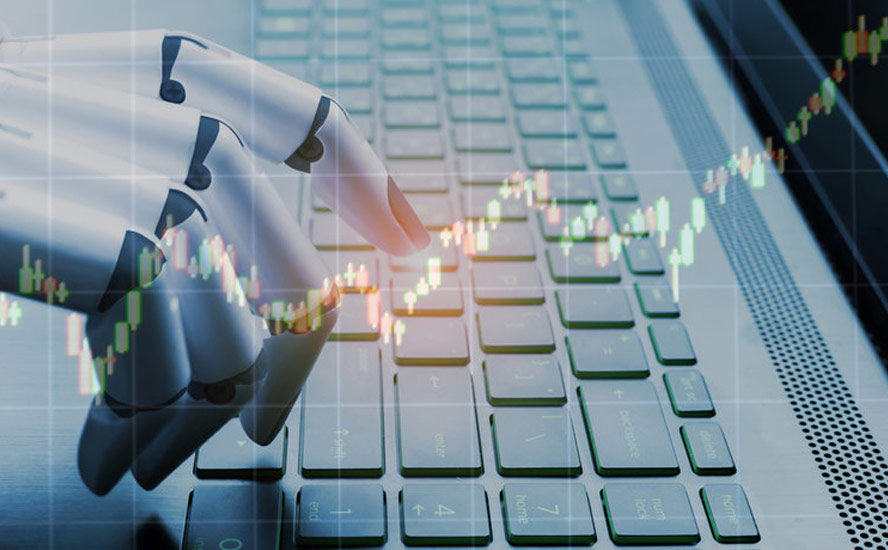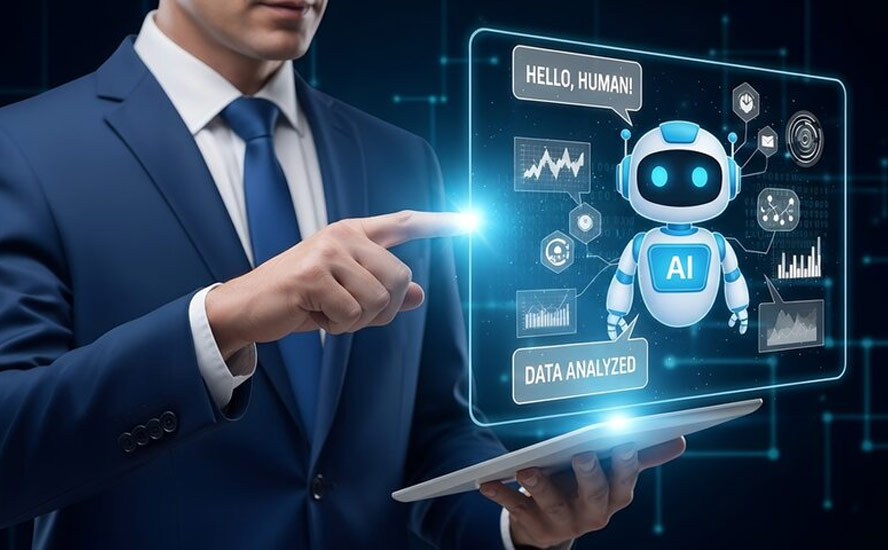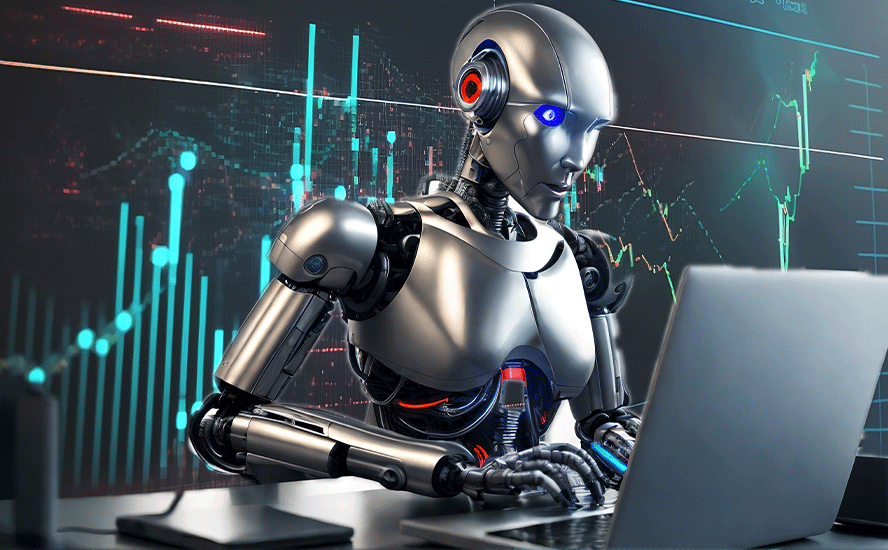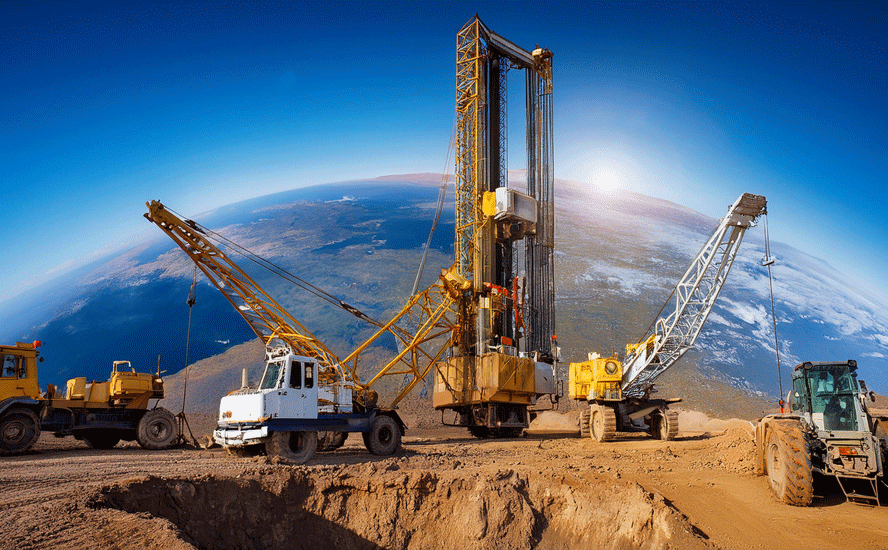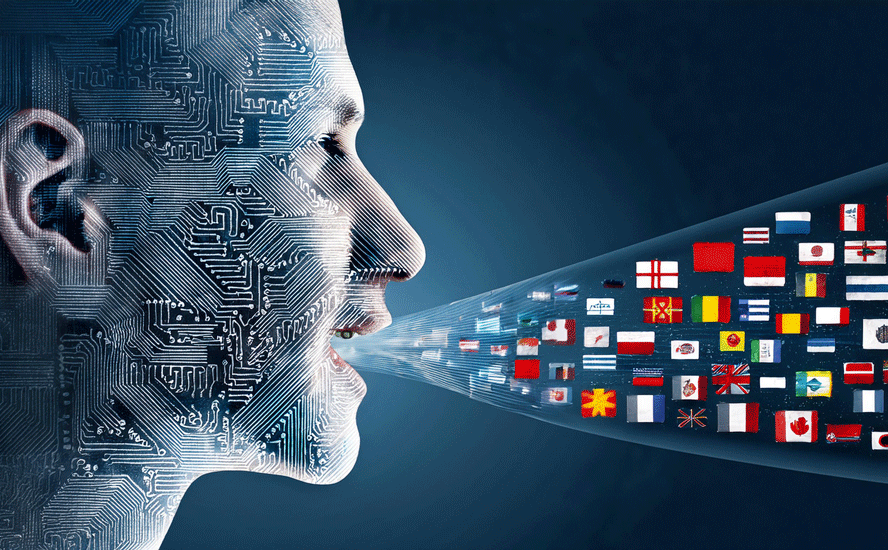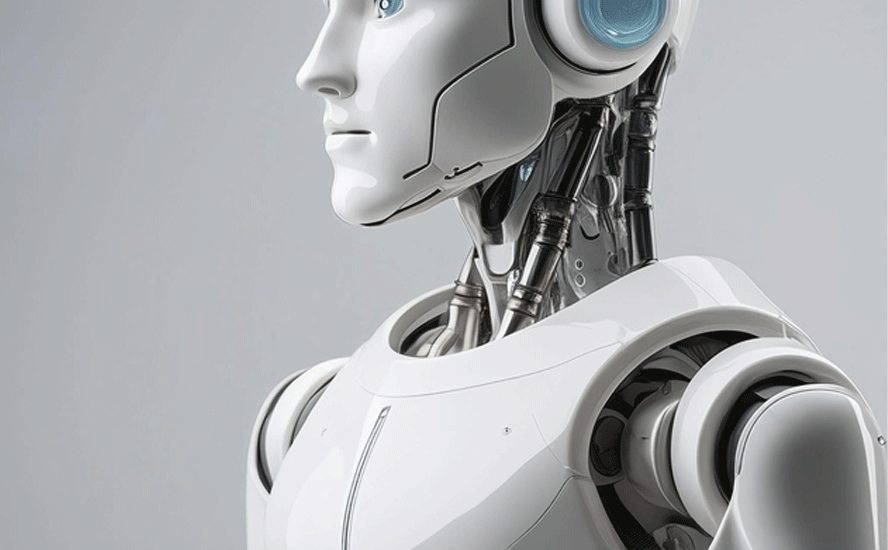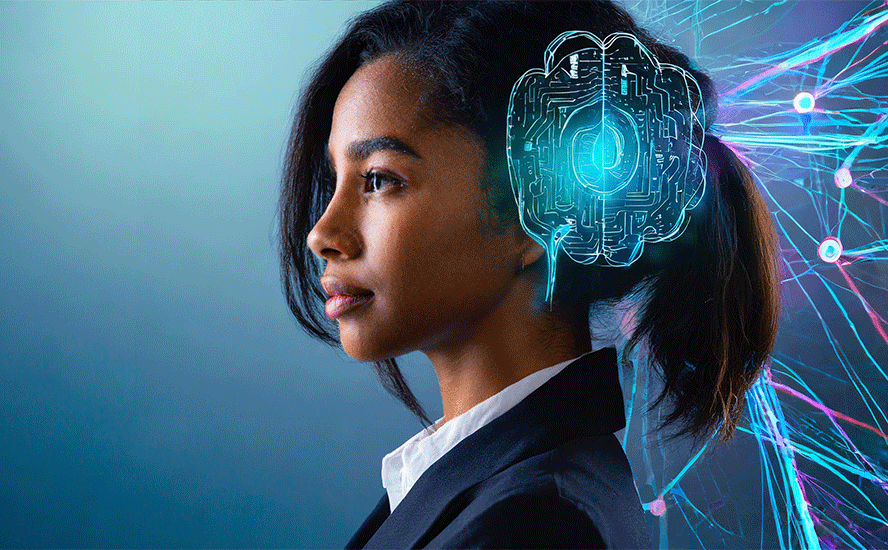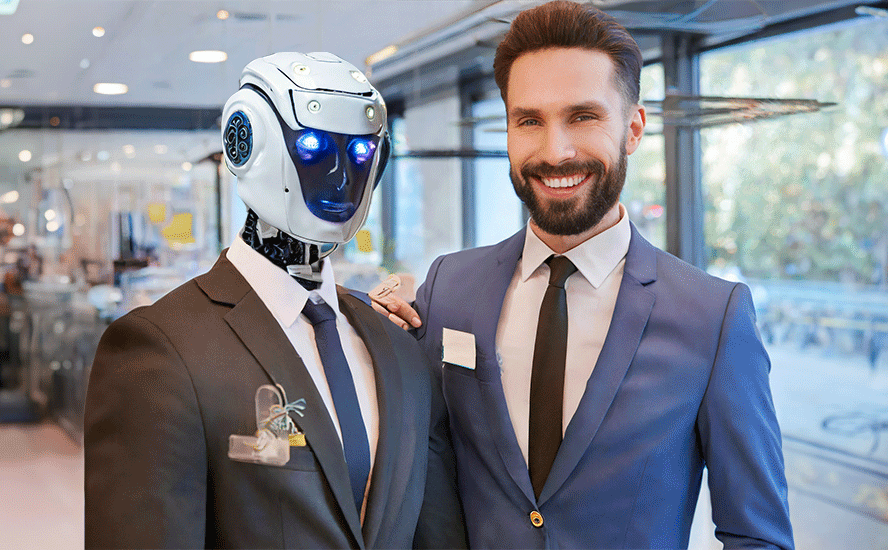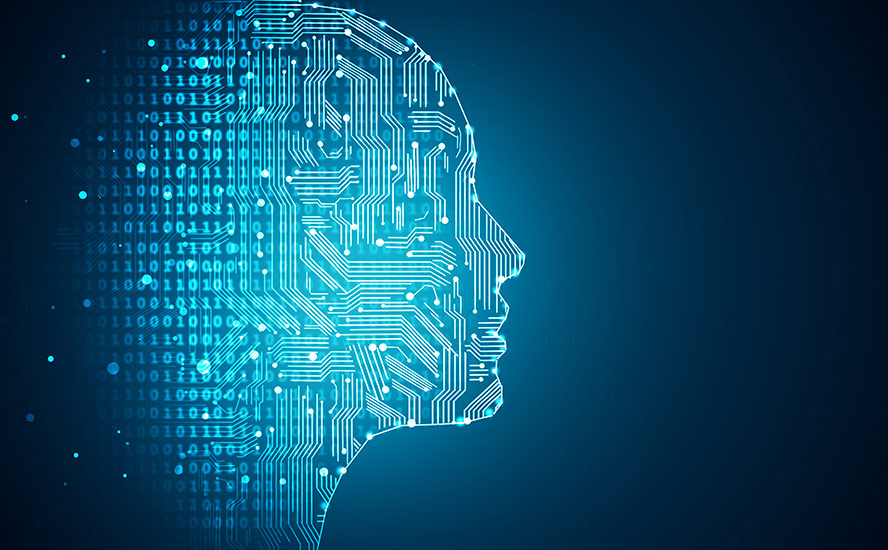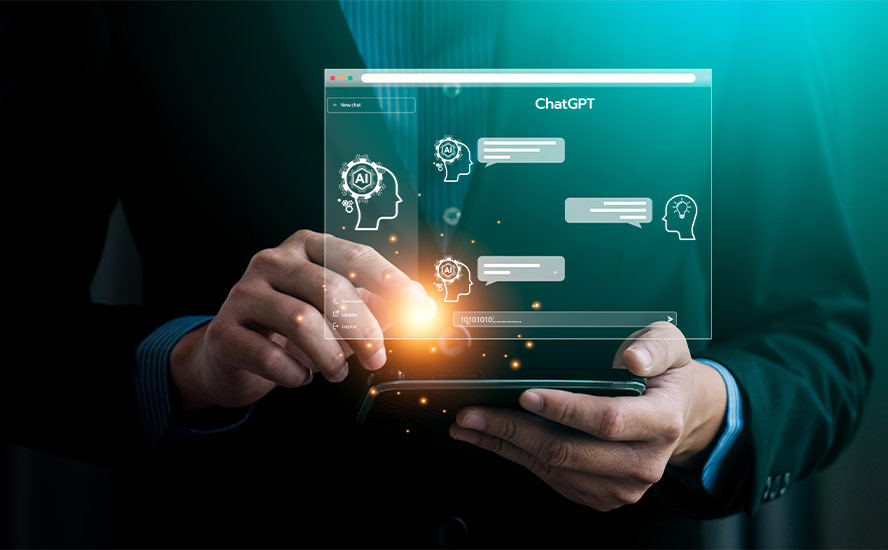The promise of AI
2021.12.01
In ‘The Terminator’ series of action films starring Arnold Schwarzenegger, a cybernetic organism (cyborg) is programmed from the future to go back in time and kill the mother of the scientist who leads the fight against Skynet, an artificial intelligence system that will cause a nuclear holocaust.
Terrifying and at times comical (“I’ll be back”, “Make my day”) The Terminator cyborg was among the first presentations of artificial intelligence (AI) to a global audience. (“C3PO” and “R2D2” of Star Wars fame and “Data” from Star Trek also qualify) The robotic assassin also depicted an extreme scenario of what could happen when “machine learning”, a vital element of AI, runs amok – ie. when machine intelligence surpasses human intelligence to the point when the machines take over and try to eliminate the humans who created them.

While numerous facets of AI have been developed over the past couple of decades, all with positive outcomes, the fear of AI being programmed to do something devastating to the human race, of computers “going rogue”, continues to persist.
On the other hand, AI holds tremendous potential for benefiting humanity in ways we are only just starting to recognize. This article gives an overview of artificial intelligence including some of its most interesting manifestations.

What is AI?
The first step is defining what we mean by artificial intelligence.
One definition of AI is “the simulation of human intelligence processes by machines, especially computers.” Such processes include learning by acquiring information, understanding the rules around using that information, employing reasoning to reach conclusions, and self-correcting.
Another definition understands artificial intelligence as “a machine’s ability to understand, think and act on a problem in the same way a human would in the same situation. But there is no limit placed on the form the AI will take. AI can manifest itself invisibly. Far away from the human eye, working on advanced problems, it can take the form of a self-driving car, parts of a factory, or even in the future some sort of advanced robotics. What is important to understand is that there is no limit on the forms AI can or will take, now or in the future, to interact with us.”
Optimistically, AI is seen as a new industrial revolution, with the unprecedented ability to unlock the constraints of the human mind. Perceived as one of the most interesting and powerful innovations that will shape the next 100 years, EI’s potential for radical industrial and social transformation is on par with the invention of the steam engine, electricity, and the personal computer.
A computer is thought to be EI-capable when, presented with a task, it can find a solution without human intervention. It learns as it goes. Two landmark examples are the 2016 victory of a computer in the complex Chinese board game “Go” versus the game’s world champion (there are said to be as many moves in Go as atoms in the universe); and when a computer, playing hundreds of games of Atari’s “Breakout”, played the game better than humans, even figuring out a creative way of winning, by digging a tunnel that helped it efficiently knock out rows of blocks.
12X growth potential
Before getting into its applications, a brief market analysis of AI reveals some startling numbers from an investment perspective. The global market for artificial intelligence was valued at US$62.3 billion in 2020. A report from Fortune Insights has the North American market growing at a blistering 33.1% CAGR to 2026, with global AI revenues soaring 12-fold, to around $118 billion.
Growth areas are expected to be in natural language processing (programming computers to analyze human language), robotic process automation, and machine learning. Major drivers also include the industrial Internet of Things (IoT), higher usage of big data and robotics in manufacturing, significantly more venture capital investment, and cross-industry partnerships.
A Research and Markets report says the growth of AI in manufacturing will be influenced by the largest players in the market including NVIDIA, Oracle, Microsoft, Intel and IBM. The report states that North America will dominate the AI manufacturing market until 2024, but that Asia Pacific will be the fastest growing region, due to increasing investments in AI technologies.
Cancer detection
Advancements in AI could be a powerful force for good, particularly with respect to medical applications.
The ability to identify breast cancer early is a critical factor in determining how a patient will respond to treatment.
Researchers are beginning to use AI to diagnose cancerous lesions before it’s too late. At MIT’s Artificial Intelligence Lab in Boston, Professor Regina Barzilay is using deep learning to teach a computer how to understand language, and read text and data. Accessing thousands of images from the Breast Imaging Center at Massachusetts General Hospital (MGH), Prof. Barzilay and Dr. Connie Lehman, head of the Breast Imaging Center, amassed a large data set of all the patients who had had breast surgery, for a certain type of high-risk lesion. With machine learning, they could separate out the patients who needed surgery, from those who could avoid it.
The predictive outcome of artificial intelligence was astounding. The AI-enabled computer could read hundreds of thousands of images where the outcome is known, learn the properties of the cancer-spot images, such as how the pixels are distributed, and then determine, what are the patterns that correlate highly with future occurrences of breast cancer?
“So instead of using human capacity to recognize patterns, which is inherently limited by our cognitive capacity, and how much we can see and remember, we’re providing the machine with a lot of data and making it learn this prediction,” says Prof. Barzilay, in a recent Frontline documentary titled ‘In the Age of AI’.
“It’s going to change the face of breast cancer,” adds Dr. Lehman. “We are using this technology not only to be better at assessing the breast density, but to get more to the point of what we’re trying to predict. Does this woman have a cancer now, and will she develop a cancer in five years? That’s where deep learning and artificial intelligence can really help us in our patients.”
Digital Science reported in 2018, a study showing a computer could detect melanoma nearly 10% more accurately than dermatologists. Shown over 100,000 images, the deep-learning computer diagnosed skin cancer with 95% accuracy, compared to 86% accuracy from 58 dermatologists shown the same images.
An even higher level of accuracy was found in a 2015 study that used Artificial Immune System technology to detect mesothelioma, a cancer affecting the thin layer of tissue covering the lungs, frequently caused by exposure to asbestos fibers.
The New York Genome Center relies on an artificial intelligence system by IBM’s Watson supercomputer, for screening its patients for glioblastoma, a form of brain cancer.
Finally, Chinese start-up Infervision is using image recognition technology and deep learning to diagnose signs of lung cancer with X-rays.
AI can also be put to use detecting strokes and heart attacks, and as a refractive surgery diagnostic tool.
An organization called Cambio Health Care developed a product that alerts a physician when a patient is at risk of having a stroke. Coala Life’s heart monitor quickly analyzes heart sounds and rhythms to detect atrial fibrillation and other arrhythmias and heart murmurs.
3D bioprinting
One of the most interesting offshoots of medical AI is the emerging field of bioprinting.
Imagine if, instead of waiting for an organ from another person — possibly a relative but likely a stranger — you could walk into a doctor’s office and have one manufactured, with your cells. It sounds far-fetched, but the technology now exists for the tailor-made transplantation of organs.
Most people are familiar with 3D printing. Put simply, 3D printing is a progression of 2D printing, where a third dimension is added to the printing of images on a flat surface (a regular ink-jet printer), adding depth and allowing the printer cartridge to move in all directions. A digital file is first created using modeling software, then sent to the printer, depositing layers of the chosen material – often plastic or wax – to build up the final product.
Among the items that have been 3D-printed are prosthetic limbs, fabricated firearms, electric vehicles, steel parts (Caterpillar introduced the first 3D-printed excavator in 2017), quick-build homes, parts for combat aircraft and spacecraft, and even decorative chocolates.


Bioprinting operates on the same general principle as regular 3D printing but instead of plastic, wax or other matter, bioprinters deposits layers of living cells to build structures like blood vessels or skin tissue. The cells are taken from an animal or a human being and cultivated until there are enough to create “bioink” which is then loaded into the printer using mechanical syringes. Adult stem cells can also be utilized.

Key to the process is a dissolvable gel which acts as a kind of incubator for the cells to multiply – like an embryo growing in a womb. Researchers may also plant cells around 3D scaffolds made of biodegradable polymers or collagen, allowing them to develop into functional tissue. The cells use their inherent properties to seek out similar cells to join with. Researchers are able to control the shape into which the cells form, and the printer builds the final structure.
After the tissues are fully grown and shaped, they are placed into a recipient’s body. The hope is that the 3D-printed object becomes as much a part of the patient’s body as the cells he or she was born with.
There are five common methods of 3D bioprinting: inkjet bioprinting, extrustion bioprinting, laser-assisted bioprinting, stereolithography, and bioprinting with acoustic waves. Read more here for a deep dive
Some of the most advanced work on bioprinting has been done at the Wake Forest Institute for Regenerative Medicine in California. One of the first major structures that Wake Forest bioprinted was a human bladder. Made from cells extracted from a patient with a poor-functioning bladder, the 3D-printed bladder was successfully transplanted. The project built on custom-grown bladders that had previously been transplanted into seven patients suffering from spina bifida, a birth defect that affects the spinal cord.
Wake Forest staffers have also created an outer human ear, and implanted bioprinted skin, bone and muscle on laboratory animals that successfully grew into surrounding tissue.

But these are just the early prototypes. Bioprinting’s leading researchers expect that as the field develops, the technology will evolve into the ability to bioprint major organs for transplant into human donors — completely eliminating waiting lists, patient deaths, and dramatically increasing the success rate of organ transplants.
The institute’s director, Anthony Atala, sees bioprinting as totally transforming the relationship between the transplant patient and doctor, in much the same way that Dell changed the way consumers interacted with the computer company that sold PCs tailored to each customer’s unique needs. Patients could order replacement parts in much the same way they might order a new clutch for their Mazda.
“You’d have companies that exist to process cells, create constructs, tissue. Your surgeon might take a CT scan and a tissue sample and ship it to that company,” Atala said in a feature article on bioprinting in Smithsonian Magazine.
The company would then ship the organ back a week or so later, ready for implantation. Welcome to the new world of regenerative medicine: the plug and play human body.
Atala said the technology is developing to the point where researchers are almost able to replicate simple organs like the outer ear and the trachea (windpipe). Importantly, there are no real surgical challenges, he told Smithsonian.
Wake Forest is also working on a skin-cell printer capable of printing living skin cells directly onto a patient. Funded by the US Defense Department, the project is targeted at veterans who have sustained facial or genital injuries in battle. The wound is scanned to get the exact size and shape, then the cells are bioprinted to fit the wound. In 2017 scientists in Madrid created a prototype of a 3D bioprinter that can create functional human skin. The printer is adequate for transplanting skin and for testing cosmetic, chemical and pharmaceutical products, ScienceDaily reported.
Last week the NOVOPLASM consortium became the first in the world to develop cold plasma technology for the treatment of infected burns and the healing of skin grafts.
At Concordia University in Montreal, a group of researchers has developed a new method of bioprinting adult neuron cells, using laser-assisted technology. The school states that Laser-Induced Side Transfer (LIST), improves on existing bioprinting techniques by using bioinks of differing viscosities, allowing for better 3D printing.
Other centers of research, like the Texas Heart Institute in Houston, aren’t trying to bioprint structures from scratch; rather, they use existing ones. An example is decelluarized pig hearts. The organs have been stripped of muscle and other living tissue, but the original architecture is intact. The idea is to use decelluarized pig hearts, repopulated with bioprinted human cells, for implantation into humans. So far the institute has succeeded in injecting pig hearts with living bovine cells, then inserted them into cows where they worked successfully next to a cow’s heart.
Already, patients with a defective heart valve can have a pig’s valve or a mechanical valve implanted. Doris Taylor, director of the institute’s regenerative medicine research program, says the decelluarized method gets around the tricky process of printing at the extremely high resolution required for highly vascularized (containing many blood vessels) organs like the heart.
“The tech is going to have to improve a great deal before we’re able to bioprint a kidney or a heart, and get blood to it, and keep it alive,” Taylor told Smithsonian.
More recent developments though are moving in that direction. In 2016 Harvard researchers 3D-printed the first “heart-on-a-chip”. The tiny device contains living human heart cells that mimic the heart’s functions.
3D printing startup BioLife4D has successfully produced human tissue in the form of a cardiac patch – derived from a patient’s white blood cells with multiple cell types contained in the human heart. According to pharmaforum, it’s another step towards bioprinting major organs for transplant.
Northwestern University in Illinois debuted a 3D printed ovary using the acoustic waves method described above, and in Sweden, researchers have successfully created human cartilage tissue, also using acoustic waves.
Recently, Russian scientists aboard the International Space Station successful bioprinted the first organ in space: a mouse’s thyroid. Space’s zero-gravity environment enables organs and tissues to mature faster than on Earth.
The holy grail of 3D bioprinting would be to come up with a viable kidney for transplant. Prof. Atala, of the Wake Forest Institute, created the first small-scale bioprinted kidney in 2002. However, Atala is the first to admit that his machine-produced kidney is nowhere near at the level it needs to be for a human transplant. A TED Talk Atala gave in 2011 about bioprinting, which culminated with a dramatic display of an object – really an over-sized bean – became controversial when the press got ahold of it and printed enthusiastic, but wrong, stories about the technology eliminating the need for a kidney transplant.

Describing the complexity of a human kidney, The Smithsonian Magazine article indicates why bioprinting still has a ways to go:
Sit down with a pencil and a piece of paper and you could hardly dream up something more architecturally or functionally complex than the human kidney. The interior of the fist-size organ is made up of solid tissues traversed by an intricate highway system of blood vessels, which measure as little as 0.010 millimeters in diameter, and approximately a million tiny filters known as nephrons, which send healthful fluids back into the bloodstream and waste down to the bladder in the form of urine. To bioprint a kidney, you’d have to be able to cultivate and introduce not only functioning kidney cells and nephrons, you’d also need to have mastered how to populate the organ with a vasculature to keep the organ fed with the blood and nutrients it needs. And you’d have to build it all from the inside out.
Another potential roadblock is the cost. No-one yet knows what it would cost to bioprint and transplant a human organ on demand, and how accessible the procedure would be to the masses of patients requiring a transplant. And while there have been successful bioprinted organ transplants, there haven’t been enough to determine how well the human body will accept the new tissue or artificial organ.
Finally, one shouldn’t underestimate the complexity and level of difficulty involved. As pharmaforum points out, “A complex network of cells, tissues, nerves and structures in a human organ need to be correctly positioned with a highest precision for it to function properly. From arranging the thousands of tiny capillaries in a liver, to printing a heart that beats, it is a long, difficult process.
While some parts of the human body are more complex than others, each piece has its own specialised requirements and issues that need addressing. The selection of the right materials, cell types and bio-inks must be as precise as the blueprint itself.”
The website estimates that bioprinting of fully functioning, complex organs like hearts, kidneys and livers is at least 10 years away.
In the meantime, patients may need to be satisfied with machine-engineered tissue rather than organs, according to The Medical Futurist:
Synthetic skin, a bionic ear, bladder, or cornea might be the first tissues to be either bioprinted or grown in the lab on demand – since they are tissues containing a small number of cell types. After that, more complicated ones might be engineered.
Still, 3D bioprinting has come a long way since Atala’s first artificial bladder in 2002. At AOTH, we think it is the next big thing in regenerative medicine. Science always starts out with experimentation, sometimes many years of it, before the technologies are commercialized. We want our subscribers to be well aware of 3D bioprinting’s potential, putting them in a position to get in early to companies that are offering bioprinted products.
While there are currently a handful of bioprinting firms, we see an entire ecosystem of small firms developing, with each focusing on a different aspect, technology or part of the body. It will not take 10 years for start-up pub-cos to IPO, seeking money to develop their technologies.

According to BIS Research, within the next seven years, the bioprinting market is expected to expand by 15.7%, and by 2025, it will be worth $4.7 billion. The United States and Canada are the industry leaders, making bioprinting an ideal new sector for North America-focused investors.
Driverless vehicles don’t make mistakes. Or do they?
Automated vehicles are often pointed to as the poster child for artificial intelligence, with great strides having been made in recent years to dispatch driver-less vehicles to easily-driven routes.
In 2016 Uber made history for making the first automated truck delivery, 50,000 cans of beer from a brewery in Fort Collins to Colorado Springs, 120 miles away.
In 2018, Waymo, the product of Alphabet Inc.’s self-driving car project, officially started its commercial self-driving car service in the suburbs of Phoenix. The company is reportedly mapping New York City’s streets although it is still a long way from testing or launching its AVs.
Ride-hailing companies Lyft and Uber are on board with autonomous driving, as are tech giants Tesla, Apple, IBM and Intel.
Apple is trying to accelerate its autonomous car known as “Project Titan”, having tried over the last two years to design a vehicle either with limited self-driving capabilities, or a version with full automation without human intervention. According to Bloomberg, the iPhone maker is targeting an AV launch in four years, with its ideal car having no steering wheel or pedals, and its passengers sitting facing each other, likely interacting with an iPad-like touch screen that serves as the vehicle’s infotainment system.
While many believe the shift from human- to robot-piloted vehicles is inevitable, with the substantial benefits of adding $7 trillion to the global economy and saving thousands of lives, others are skeptical. The collapse of unionized trucking in the US has whittled a truck driver’s income from what used to be a decent wage, to barely scraping by. Autonomous vehicles are likely to be the final nail in the coffin of the once-mighty Teamsters. Other victims are likely to include big chunks of the auto industry, gas stations, drive-thrus and taxi drivers.
As for being the safer alternative, in March 2018 the first death by an autonomous vehicle was recorded in Tempe, Arizona. A 49-year-old woman was struck at 39 mph by a fully-automated, self-driving Uber car, as she was walking her bicycle across the road in the dark. In its investigation, the Transportation Safety Board revealed that the car couldn’t recognize her as a pedestrian because she wasn’t crossing at a cross-walk.
Autonomous vehicles apparently aren’t programmed to identify jaywalkers. In my opinion, there’s still a long ways to go before driverless vehicles become a common sight on North American roads and highways.
Military applications
AVs and drones are two AI-equipped technologies anticipated to improve the speed of military operations and combat effectiveness. Indeed militaries around the world have embraced artificial intelligence for use in a number of areas, including:
- Drones that can identify targets on the battlefield and conduct surveillance during combat
- Swarm drones with the ability to attack and defend
- Guiding smart weapons systems
- Piloting autonomous vehicles
- Predicting an enemy’s next move before it happens, conferring a tactical advantage
- Predicting demand for supplies and map out the most efficient transport routes
- Predicting and preparing for negotiating outcomes
- Training new recruits
As for future AI applications, military news site SOFREP gives us a glimpse:
If autonomous tanks are also developed, they could easily take over for soldiers on the ground in the same way that drones have taken over for pilots in the air…
Lockheed Martin’s Aegis system can control multiple air defense systems simultaneously. This means that the Aegis system can monitor more than 100 targets at one time.
Combat operations will be faster and more precise because AI can handle complex tasks more quickly than humans. Logistics will be more efficient because AI systems will be able to better coordinate the transport of supplies. And training will be more effective because AI can provide personalized instruction to soldiers.
Making life better
Inhabiting our personal spaces now, and in the near future, are very task-specific AI inventions that, while not necessary for daily living, make life just a little bit better. Some of these have been with us for awhile.
Robotic vacuums such as iRobot’s popular Roomba clean your house, remember the layout to clean more efficiently, dump their own dirt in a receptacle, and even find their way back to the recharging station. Siri and Alexa, the ubiquitous voices installed on your smart phone, may know your comings and going better than your spouse. The revolutionary voice-recognition programs help us to quickly scan the web, shop and schedule appointments. They also help power and heat smart homes, and assist those with mobility issues.
Cogito, Boxever and John Paul are examples of AI programs that improve both customer service and a client’s shopping experience. While not generally recognized as AI, major shopping portals like Amazon, Netflix and Pandora are also employing machine learning to identify a user’s tastes and suggest products, movies or songs, based on the user’s search history.
AI for education
Artificial intelligence has huge potential when it comes to the many facets of learning. Among the most important applications are personalized lessons, tutoring and task automation.
One of the changes in public school education is the shift from group learning to individualized lesson plans that meet the specific needs of students. The latter however requires a lot of planning and teaching resources. AI-based learning systems provide educators with data points such as the learning style of students, their progress and abilities. St. John’s Church of England, for example, is implementing AI at its primary school to create personalized lessons for students to study at their own pace, The Times reported recently. AI can also be used to create lesson plans and grade exams.
Tutoring is a tried and true method of learning based on one-on-one interaction, however nowadays there are few obstacles to a student learning from an AI-enabled tutor on a computer screen. Cloubot AI converses with students about the problems they are facing and can correct their mistakes in real time.
Robots are also slowly being incorporated into classrooms.
An expressive classroom robot called Milo, developed by robotics company RoboKind, says Milo “never gets tired, never gets frustrated and is always consistent”. The robotic ability to repeat something again and again in the same tone without tiring is particularly suited to helping children with ASD [Autism Spectrum Disorder] learn, states Nova, adding that Milo is also showing benefits for kids with Down Syndrome, ADHD and other social or learning problems.
Outside the classroom, tasks previously done by administrators can be automated with artificial intelligence. For example, chatbots can help students to complete the relatively simple and repetitive college/ university admission process.
AI for education is a growing and potentially lucrative sector, worth US$1 billion last year and with an expected CAGR of 40% between 2021 and 2027, states a 2020 article by Dataquest.
Finding new planets
One of science’s most perplexing questions is whether there is extra-terrestrial life “out there” in the universe. An exoplanet is a planet that orbits around a star outside the solar system. If an exoplanet could be found with an oxygenated atmosphere and water, might there also be life forms? ExoMiner is a type of neural network that can learn and improve its exploration abilities if fed a sufficient amount of data.
According to Space.com, using data from NASA’s now-defunct Kepler space telescope, ExoMiner has found over 300 previously unknown exoplanets. The telescope discovered thousands of planet candidates in less than 10 years of service, and evidence of its accuracy lies in the fact that nearly 3,000 of these have since been confirmed, well over the majority of the 4,469 exoplanets currently known.
AI for evil
Of course, artificial intelligence is not all about positive outcomes. There are some decidedly negative consequences of allowing machines to do the work human beings used to do. Two of the best examples are AI’s ability to conduct Orwellian-like video surveillance, and AI-powered drones that can kill or maim with clinical precision.
It’s estimated there are about 500,000 CCTV cameras mounted in London, and 4 to 6 million throughout the United Kingdom. Londoners would probably be less okay with CCTV if they knew the power of today’s surveillance technology.
Before artificial intelligence, surveillance cameras had limited use. The computers at the other end being monitored by a bored security guard were only capable of storing the footage, usually for a limited time before getting deleted. As Vice reports,
Increasingly, none of that is true. Recent developments in video analytics—fueled by artificial intelligence techniques like machine learning—enable computers to watch and understand surveillance videos with human-like discernment. Identification technologies make it easier to automatically figure out who is in the videos. And finally, the cameras themselves have become cheaper, more ubiquitous, and much better; cameras mounted on drones can effectively watch an entire city. Computers can watch all the video without human issues like distraction, fatigue, training, or needing to be paid. The result is a level of surveillance that was impossible just a few years ago.
An ACLU report called “the Dawn of Robot Surveillance” says AI-aided video surveillance “won’t just record us, but will also make judgments about us based on their understanding of our actions, emotions, skin colour, clothing, voice, and more. These automated ‘video analytics’ technologies threaten to fundamentally change the nature of surveillance.”

Nowadays, the computers connected to the cameras can tell whether someone is walking in the right direction, they can count people and cars, identify people based on their clothing, analyze their body language, and even tell a customer’s sentiment, such as Amazon’s in-store cameras. The technology already exists for cameras to automatically identify someone, in real time. As Vice presciently notes, Facial recognition technology is improving all the time, made easier by the enormous stockpile of tagged photographs we give to Facebook and other social media sites, and the photos governments collect in the process of issuing ID cards and drivers licenses.
Think your online identity is private? Police already have the ability to track cell phones, and identify people from information broadcast by smart phones, laptops and Bluetooth-connected devices.
Western governments deem such power to be in the interests of national security and/ or crime prevention, but as we all know from the case of Edward Snowden, the former CIA employee/ subcontractor and whistle blower who copied and leaked highly classified information from the National Security Agency, it can also be used to spy on citizens.
Among the most disturbing uses of AI for social control and suppressing political activity is what is currently happening in China. Telecom carriers must scan the faces of anyone applying for mobile or Internet service. Is there any doubt the Chinese government will make good use of this valuable information?
Quartz reports that the Hong Kong government invoked emergency powers outlawing demonstrators from wearing face masks. Rioters who are identified face up to 10 years in prison, or worse in Mainland China.
There, facial recognition software and AI have combined to produce a “social credit score” for every citizen that helps authorities to reward or punish behaviour – even jaywalking. This program that in the West would be considered abhorrent, a gross invasion of privacy, is reportedly quite popular among Chinese citizens.
A 2019 report by the Carnegie Endowment for International Peace finds a growing number of countries are deploying AI surveillance tools to surveil citizens for “a range of policy objectives – some lawful, others that violate human rights, and many of which fall into a murky middle ground.” The report, via Al Jazeera, says at least 75 of 176 countries are actively using AI for surveillance purposes. China is the largest supplier of these technologies.
The use of drones, (or UAVs, short for unmanned aerial vehicles) is probably the most frightening manifestation of AI, for their ability to be used in first-strike attacks and futuristic machine-to-machine warfare. Drones under the control of a human operator can target and kill enemies from thousands of miles away.
Houthi-backed rebels in Yemen claimed responsibility for drone strikes on two oil facilities in Saudi Arabia including Aramco’s largest oil processing plant.
The Pentagon has warned that China is exporting “next-generation drones” to countries in the Middle East — who under a weapons embargo are banned from purchasing advanced American UAVs. The graphic below shows China’s drone fleet has a ceiling of between 4 and 9 kilometers, and a payload from 80 to 1,200 kilograms. China’s killer drones are most frequently seen flying the skies above Saudi Arabia, Jordan, Nigeria, Yemen, Iraq, and the UAE, writes Zero Hedge.

Of course, drones are being flown in plenty of other scenarios, some extremely useful. For instance, a group of Virginia Tech engineers is hoping to employ drones in search and rescue missions: Using mathematical models based on historical data that reflect what lost people actually do combined with typical searcher behavior, the researchers hope this novel approach of balancing autonomy with human collaboration can make searches more effective, Eureka reports.

Unmanned vehicles are also being used to increasingly greater effect for scanning and mapping building sites; helping to solve traffic problems; to drop supplies to disaster victims; for providing farmers with intel as to when is the best time to plant their crops, and how much fertilizer to use; for inspecting infrastructure like pipelines and power lines; surveying damaged buildings for insurance purposes; and by film-makers or news media to capture aerial footage.
Conclusion
From this relatively brief analysis, it should be apparent that artificial intelligence, despite being a force for good and evil, opens up a genie’s bottle worth of investable ideas. The AI “revolution” has only just started and it is moving forward at a rapid pace. We are talking about a 33% compound annual growth rate – a 12-bagger, in resource investing terms.
In particular I like how AI shows the potential of being bolted onto just about every industry – including 3D printing which to me is a mini-revolution in itself, transforming the manufacture of everything from rockets to human organs.
Richard (Rick) Mills
aheadoftheherd.com
subscribe to my free newsletter
Legal Notice / Disclaimer
Ahead of the Herd newsletter, aheadoftheherd.com, hereafter known as AOTH.
Please read the entire Disclaimer carefully before you use this website or read the newsletter. If you do not agree to all the AOTH/Richard Mills Disclaimer, do not access/read this website/newsletter/article, or any of its pages. By reading/using this AOTH/Richard Mills website/newsletter/article, and whether you actually read this Disclaimer, you are deemed to have accepted it.
Any AOTH/Richard Mills document is not, and should not be, construed as an offer to sell or the solicitation of an offer to purchase or subscribe for any investment.
AOTH/Richard Mills has based this document on information obtained from sources he believes to be reliable, but which has not been independently verified.
AOTH/Richard Mills makes no guarantee, representation or warranty and accepts no responsibility or liability as to its accuracy or completeness.
Expressions of opinion are those of AOTH/Richard Mills only and are subject to change without notice.
AOTH/Richard Mills assumes no warranty, liability or guarantee for the current relevance, correctness or completeness of any information provided within this Report and will not be held liable for the consequence of reliance upon any opinion or statement contained herein or any omission.
Furthermore, AOTH/Richard Mills assumes no liability for any direct or indirect loss or damage for lost profit, which you may incur as a result of the use and existence of the information provided within this AOTH/Richard Mills Report.
You agree that by reading AOTH/Richard Mills articles, you are acting at your OWN RISK. In no event should AOTH/Richard Mills liable for any direct or indirect trading losses caused by any information contained in AOTH/Richard Mills articles. Information in AOTH/Richard Mills articles is not an offer to sell or a solicitation of an offer to buy any security. AOTH/Richard Mills is not suggesting the transacting of any financial instruments.
Our publications are not a recommendation to buy or sell a security – no information posted on this site is to be considered investment advice or a recommendation to do anything involving finance or money aside from performing your own due diligence and consulting with your personal registered broker/financial advisor.
AOTH/Richard Mills recommends that before investing in any securities, you consult with a professional financial planner or advisor, and that you should conduct a complete and independent investigation before investing in any security after prudent consideration of all pertinent risks. Ahead of the Herd is not a registered broker, dealer, analyst, or advisor. We hold no investment licenses and may not sell, offer to sell, or offer to buy any security.
Legal Notice / Disclaimer
Ahead of the Herd newsletter, aheadoftheherd.com, hereafter known as AOTH.Please read the entire Disclaimer carefully before you use this website or read the newsletter. If you do not agree to all the AOTH/Richard Mills Disclaimer, do not access/read this website/newsletter/article, or any of its pages. By reading/using this AOTH/Richard Mills website/newsletter/article, and whether you actually read this Disclaimer, you are deemed to have accepted it.



